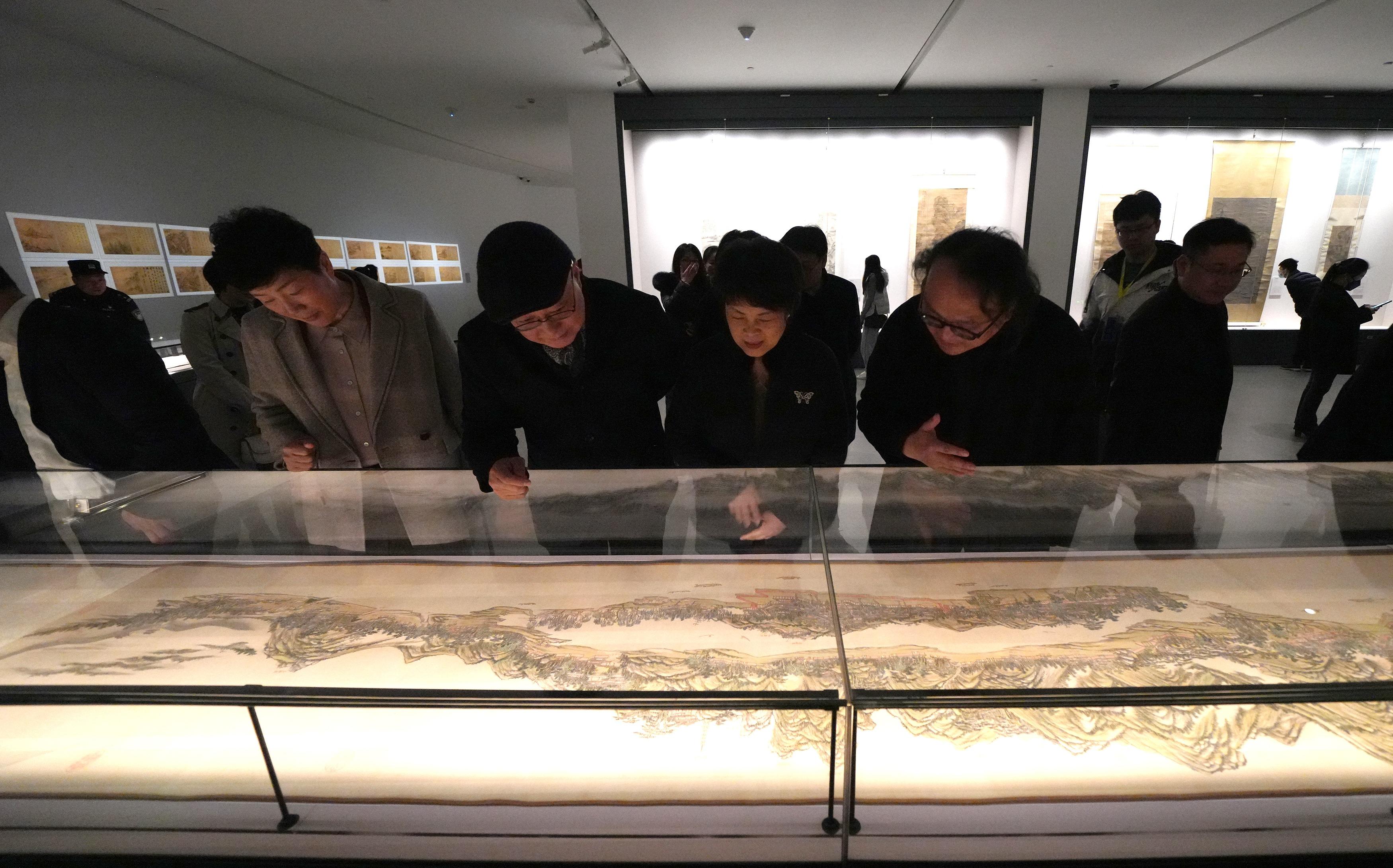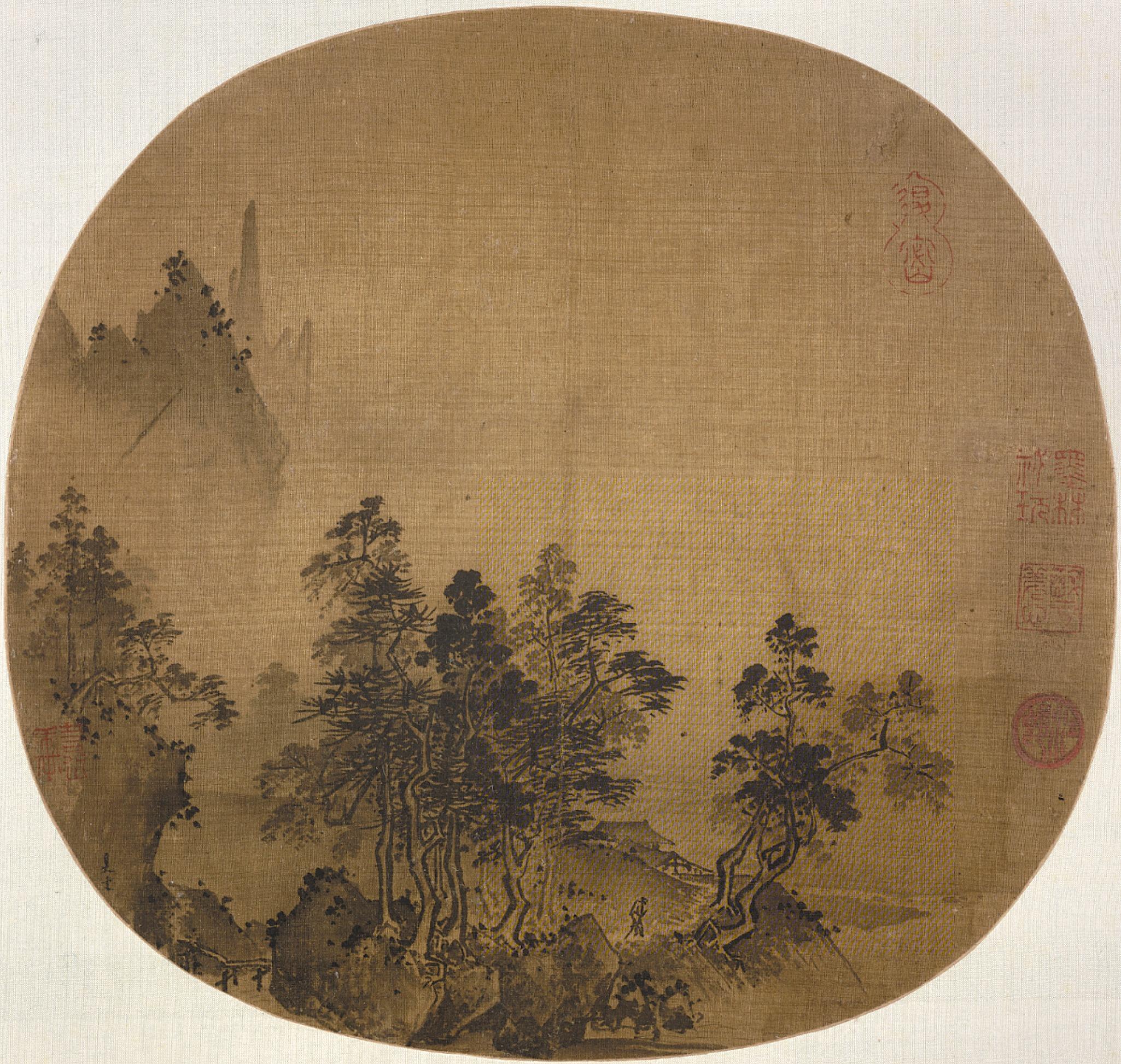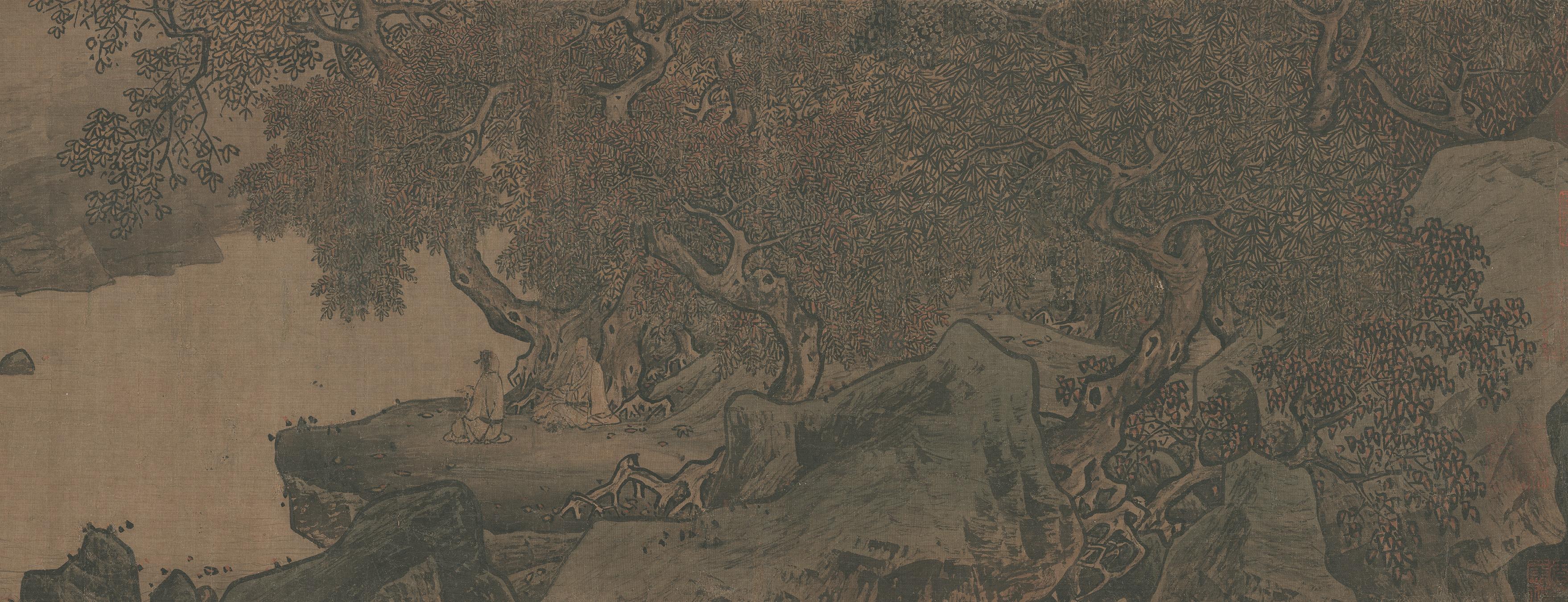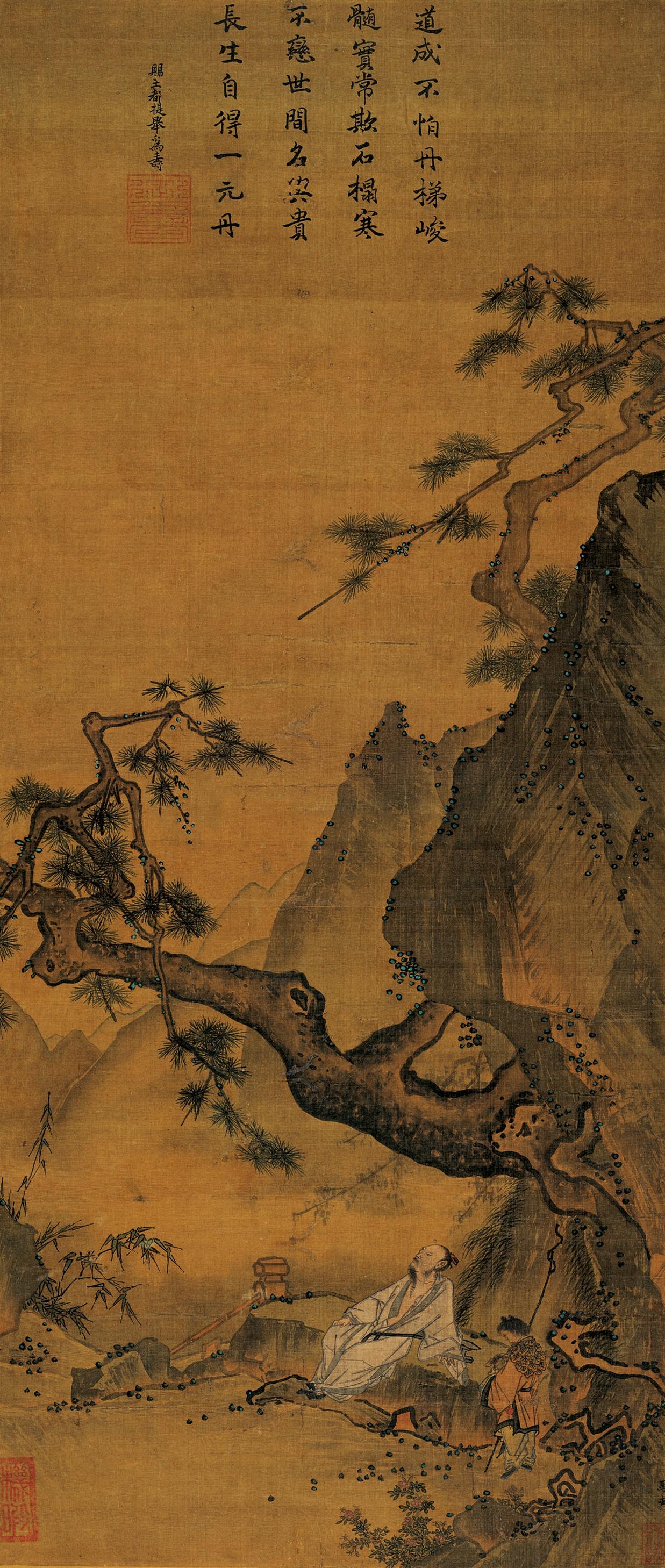Exhibition shows navigation of styles that reached a peak during the Song Dynasty but also influenced later artists, Lin Qi reports.
 Embrace the Landscape, an ongoing exhibition at the Art Museum of the China Academy of Art in Hangzhou, Zhejiang province, brings together 37 paintings and calligraphic works from the Song (960-1279) to the Qing (1644-1911) dynasties. (PHOTO PROVIDED TO CHINA DAILY)
Embrace the Landscape, an ongoing exhibition at the Art Museum of the China Academy of Art in Hangzhou, Zhejiang province, brings together 37 paintings and calligraphic works from the Song (960-1279) to the Qing (1644-1911) dynasties. (PHOTO PROVIDED TO CHINA DAILY)
Spring has descended on Hangzhou, Zhejiang's provincial capital, which is often referred to as a heavenly city on Earth. Sprouting plants and blooming flowers have invigorated the scenery at the West Lake, one of the most popular scenic spots in the country. The casual drizzle and rising mist from circling mountains add nothing but a poetic touch to the landscapes. Inside the nearby Art Museum of the China Academy of Art, the exhibition halls are also bustling with visitors, who line up patiently to get a brief view of a dozen classical landscape paintings, enabling them to see how the scenery of the West Lake and its neighboring areas looked several centuries ago.
Embrace the Landscape, an exhibition running through to Sunday, brings together 37 paintings and calligraphic works from the Song (960-1279) to the Qing (1644-1911) dynasties, from the collections of several important museums around the country, navigating an artistic tradition that reached a peak during the Song Dynasty and has influenced artists of later periods. A digital version of the exhibition has been developed so that people can take a high-definition tour of it anytime, anywhere.
What has caught the most attention at the exhibition are 10 works, some of which date back to the Northern Song Dynasty (960-1127), when Chinese landscape painting developed a fully-formed, monumental style, often called "a panoramic-view structure".
The others were produced in the Southern Song Dynasty (1127-1279) when Hangzhou became the imperial capital and attracted an influx of artists, and they, especially those serving in the royal court, formed a delicate approach to depicting subjects.
The exhibition seeks to immerse visitors in the natural landscapes and highly aesthetic atmosphere that artists living centuries ago experienced in Hangzhou and the Jiangnan region (the area south of the lower reaches of the Yangtze River) as a whole, as they journeyed, created and socialized there.
 Peaks in Mist and Hidden Thatched Cottage in Forest, by Xia Gui of the Southern Song Dynasty (1127-1279). (PHOTO PROVIDED TO CHINA DAILY)
Peaks in Mist and Hidden Thatched Cottage in Forest, by Xia Gui of the Southern Song Dynasty (1127-1279). (PHOTO PROVIDED TO CHINA DAILY)
Gao Shiming, dean of the China Academy of Art, says, "When I stood in front of those Song paintings, I couldn't help but wonder how painters back then were able to re-create the mood and circumstances before their eyes with their brushes. There is a distinctive approach to understanding the logics of the world."
He says that when Song artists layered out ranges of mountains and peaks and forests, they also sought to present the infinity and tranquility of the universe; and when they rendered liveliness to birds and flowers, they were in fact hailing the magic of nature to create lives.
When appreciating these great works, he adds, one is able to connect with the spiritual world of ancient intellectuals and their practice of gewu zhizhi (an exhaustive study of things for a thorough acquisition of knowledge), a principle of Confucianism; and that the purpose of tracing the past is for people to integrate the reformative spirit, philosophical outlook and lifestyle of refinement of ancient Chinese with the experiences of modern life, and to create a new realm of art and culture.
 A Riverside Debate Between Two Thinkers, by Li Tang. (PHOTO PROVIDED TO CHINA DAILY)
A Riverside Debate Between Two Thinkers, by Li Tang. (PHOTO PROVIDED TO CHINA DAILY)
The exhibition marks a rare gathering of the works of "four great painters of the Southern Song Dynasty" — Li Tang, Liu Songnian, Ma Yuan and Xia Gui — the most luminous among a galaxy of cultural and artistic figures in Hangzhou, whose innovative brushwork ushered the aesthetics of Northern Song landscape painting to find new context. All four served as court artists at the imperial academy of painting.
They helped develop a distinguished academic painting style that has enjoyed long-lasting influence.
 Pine Trees, by Ma Yuan. (PHOTO PROVIDED TO CHINA DAILY)
Pine Trees, by Ma Yuan. (PHOTO PROVIDED TO CHINA DAILY)
One of the major changes they made was a shift from the panoramic-view structure, common in the Northern Song era, to a partial-focus layout. This approach is especially noticeable in the works of Ma and Xia, and is often referred to as the "Ma-Xia school". They favored the technique of depicting their subjects — mountains, rivers, men and animals — in only a half of the composition, so much that they gained nicknames, "one-corner Ma" and "one-side Xia".
It is said that the treatment could be a metaphor for the territory of the Northern Song Dynasty which was later occupied by the Jurchen founders of the Jin Dynasty (1115-1234), forcing the Song court to establish the Southern Song in Hangzhou, then called Lin'an. Regardless, the unique structure achieved aesthetic recognition for the use of white space that accentuates a contrast between the substance and void.
 A Scroll of Landscapes of Four Seasons, by Liu Songnian, who, along with Xia Gui, Li Tang and Ma Yuan, is considered as one of the four great painters of the Southern Song Dynasty. (PHOTO PROVIDED TO CHINA DAILY)
A Scroll of Landscapes of Four Seasons, by Liu Songnian, who, along with Xia Gui, Li Tang and Ma Yuan, is considered as one of the four great painters of the Southern Song Dynasty. (PHOTO PROVIDED TO CHINA DAILY)
Xu Jiang, vice-president of the China Artists Association and former dean of the China Academy of Art, says he is greatly awed by A Scroll of Landscapes of Four Seasons, by Liu Songnian, in which Liu depicts the natural scenery and the leisurely, recreational lifestyle led by the dignitaries in Lin'an.
"Liu was born in Hangzhou, and used to live near the Qingbomen gate, which was close to the West Lake. His works remind me of a saying that goes, 'the West Lake links the worlds of people and celestial beings'," he notes, adding that what people see and feel in those paintings is not only the height of Chinese culture during the Song era, but also the spiritual pursuit of an enriched, carefree state in the embrace of nature, which is something that was, and remains, essential to the mentality of the Chinese people.
Contact the writer at linqi@chinadaily.com.cn


